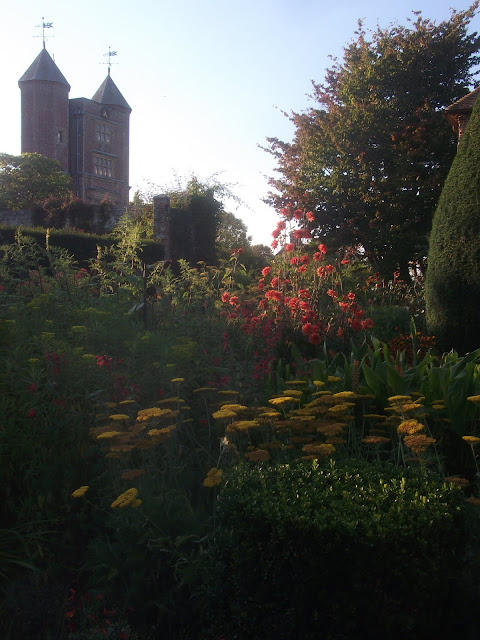I’m grateful to have to gone here directly after the placement at Wollerton, where the planting was also magnificent but in a quite different way. The Herbaceous Border at Wollerton is one of the most beautiful things I’ve ever seen; breathtaking colours in complete harmony, with a perfect transition of colour along the border in the classic Jekyll style. The atmosphere there was a lot more controlled, or at least ‘designed’ and orderly. The perfection though was its beauty, and this would have been greatly diminished by scores of blasted Teasels self-seeding themselves all about the place! Cut to Great Dixter, where the beauty of the place is its carefree romance, and apparent wildness, where self-seeders running riot looks utterly correct & proper.
“The way we thread groups into and through one another so that the plants appear to have put their own ideas into the weaving of an overall tapestry, makes its strongest contribution to the cottage garden element.”
This quote from Christopher Lloyd hints at what I witnessed during last week. That classic idea of cottage garden informality, with flowers and herbs crammed into the borders side by side, gets close to the nub of the success of Dixter. Plants are planted dangerously close together, and the sheer volume of plants leads to rather complex arrangements! That said, the bare bones of a scheme can actually be pretty basic, i.e. several groups of adjacent perennials, but the magic comes from the presentation and what is weaved over the top. The likes of Verbena bonariensis are overlaid on a scheme, which have huge impact but require little planting space. Species with a branching habit such as Cornflower, or gauzy foliage such as Bronze Fennel, are also quite practical planting options, as quite simply they allow you to see through them. It would be pointless packing in all these delightful specimens if one couldn’t see past the first drift! These ideas are then repeated throughout the season with successional planting, an area often changing three times with a different plant or combination. This approach to planting, over a long season and with old-fashioned plants, ultimately leads to scenes of more bees and hoverflies than you might think possible to see in one place, and for me that is the greatest joy!
 |
| Long Border with Tagetes ‘Cinnabar’ in the foreground |
 |
| Pink Phlox into white Phlox and blue Eryngium |
 |
| Salvia, Helenium, the daisy heads of Erigeron annuus (a misleadingly named perennial) and Phlox. The flecks of blue are provided by Salvia uliginosa |
 |
| Minimal path space in the High Garden, Fuchsia, Hemerocallis, Phlox; all sorts crowding out the path |
 |
| This is perhaps the best thing I saw here, wonderful sprays of Ammi visnaga being delicately interspersed with Verbena bonariensis. V. bon features all over the garden, phenomenal plant |
 |
| Quite probably the second best; the slashes of Acanthus down at the front are inspired |
 |
| All-sorts; Lychnis, Bronze Fennel, Nasturtium, Cotinus, Dill and so on and so forth |
 |
| Jungle vibes in the Exotic Garden, the huge leaves of Tetrapanax papyrifer in the foreground |























































